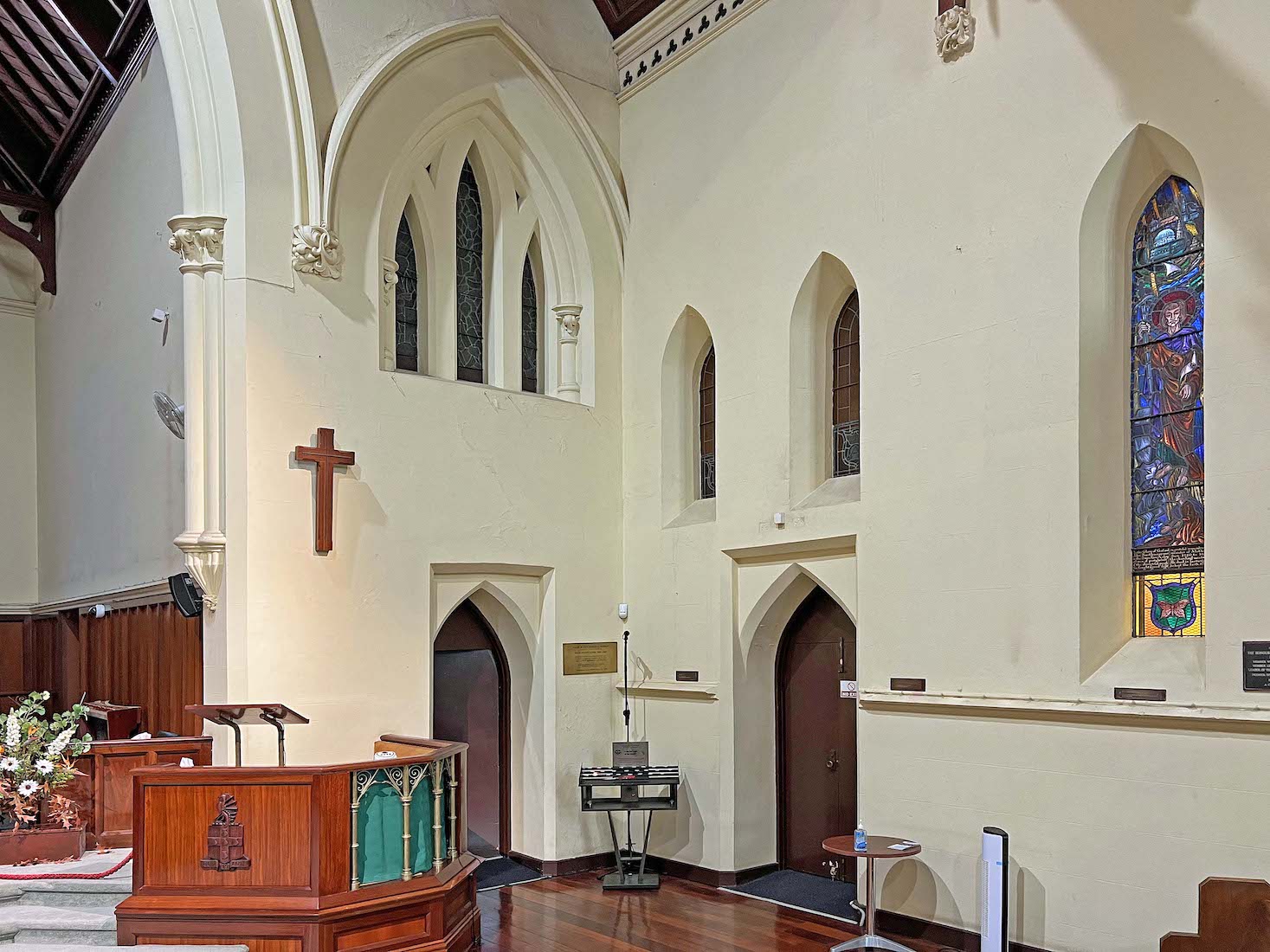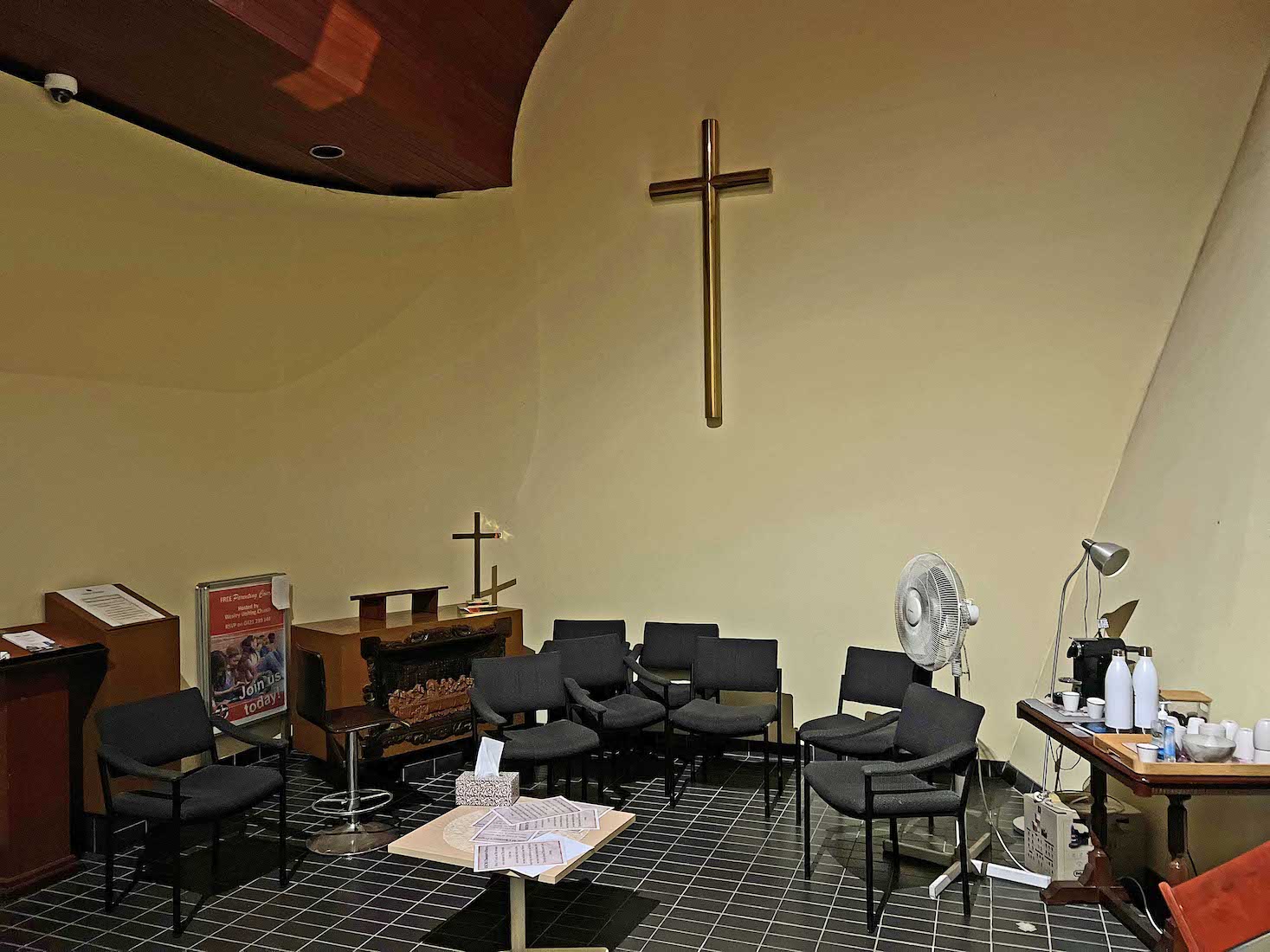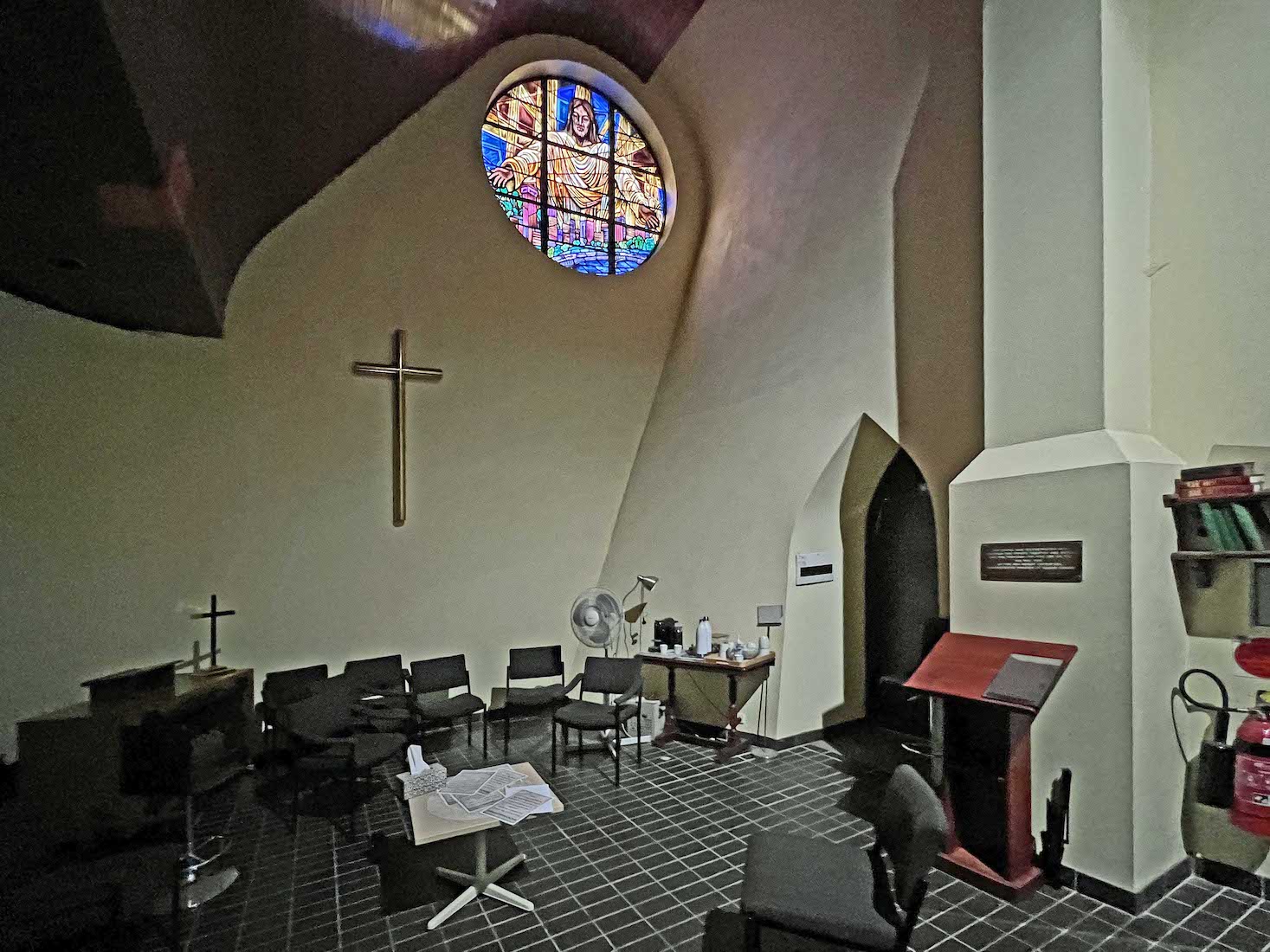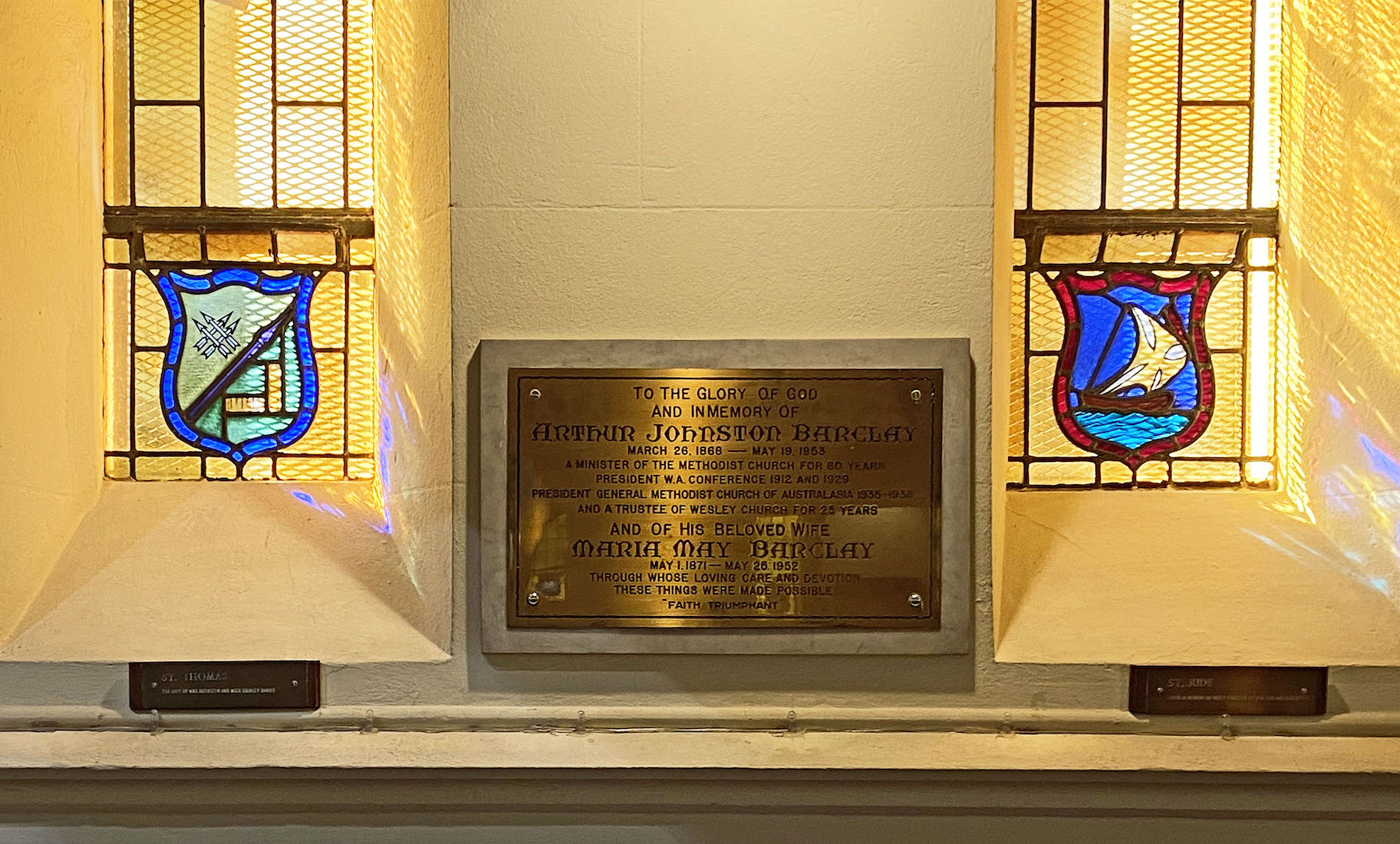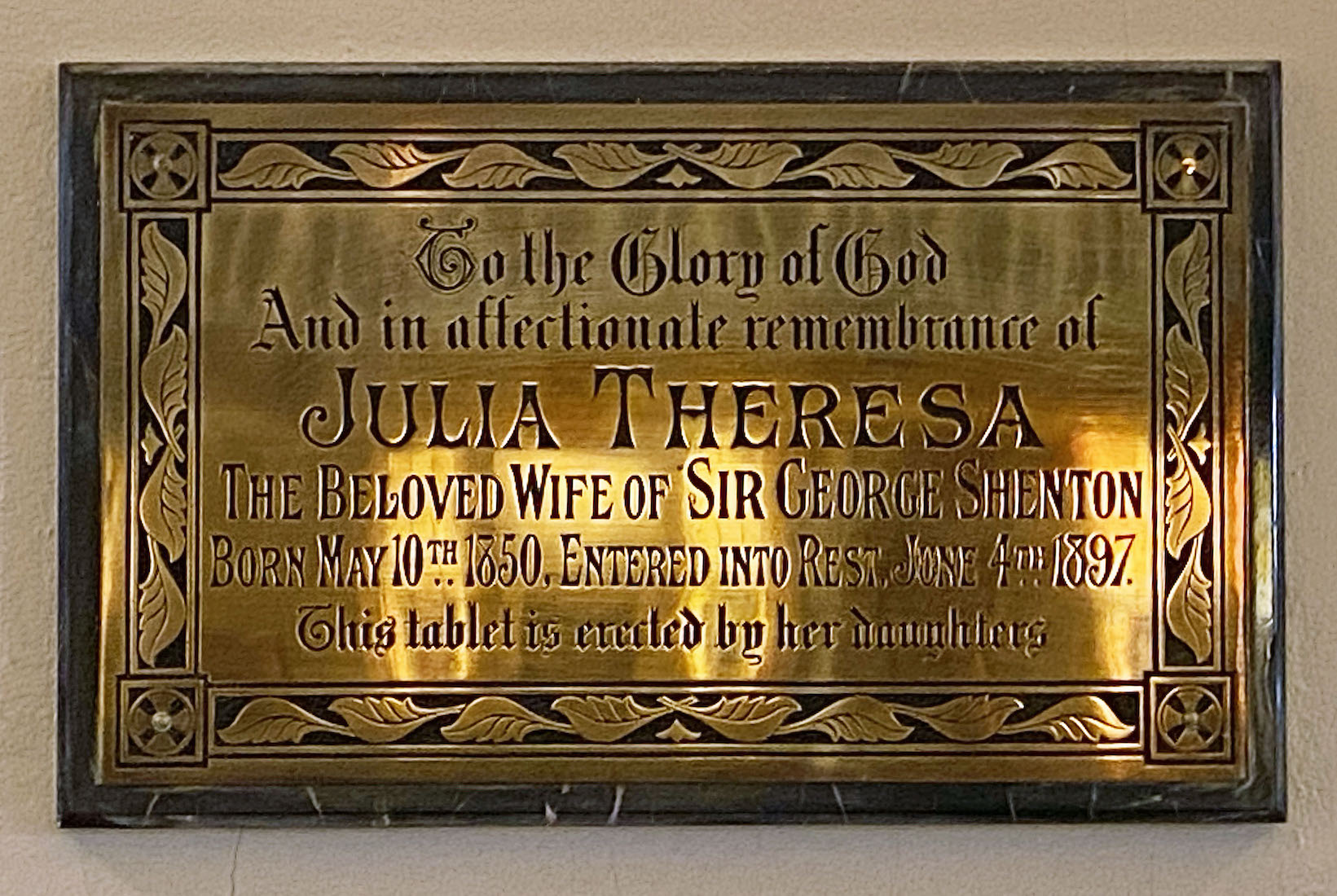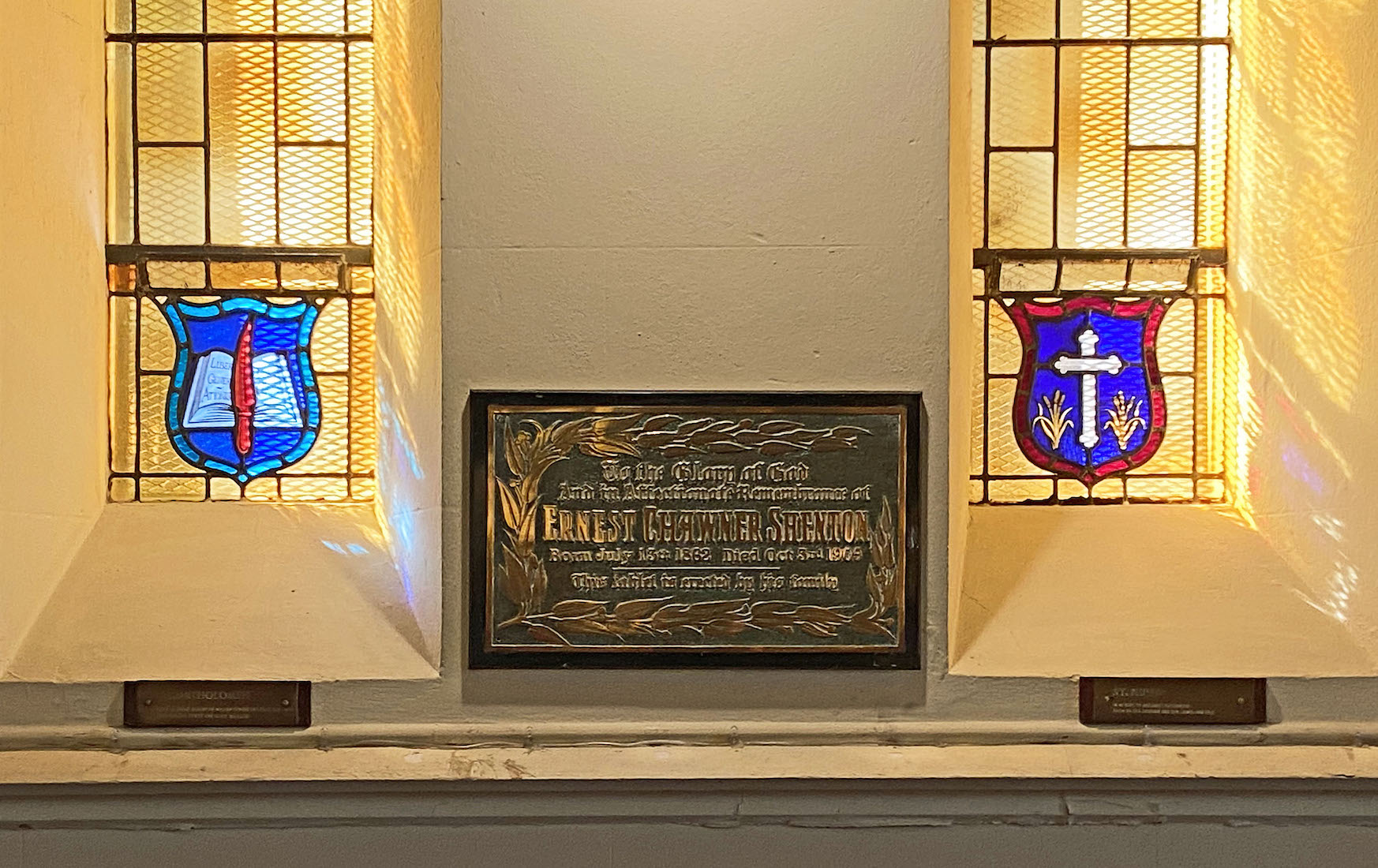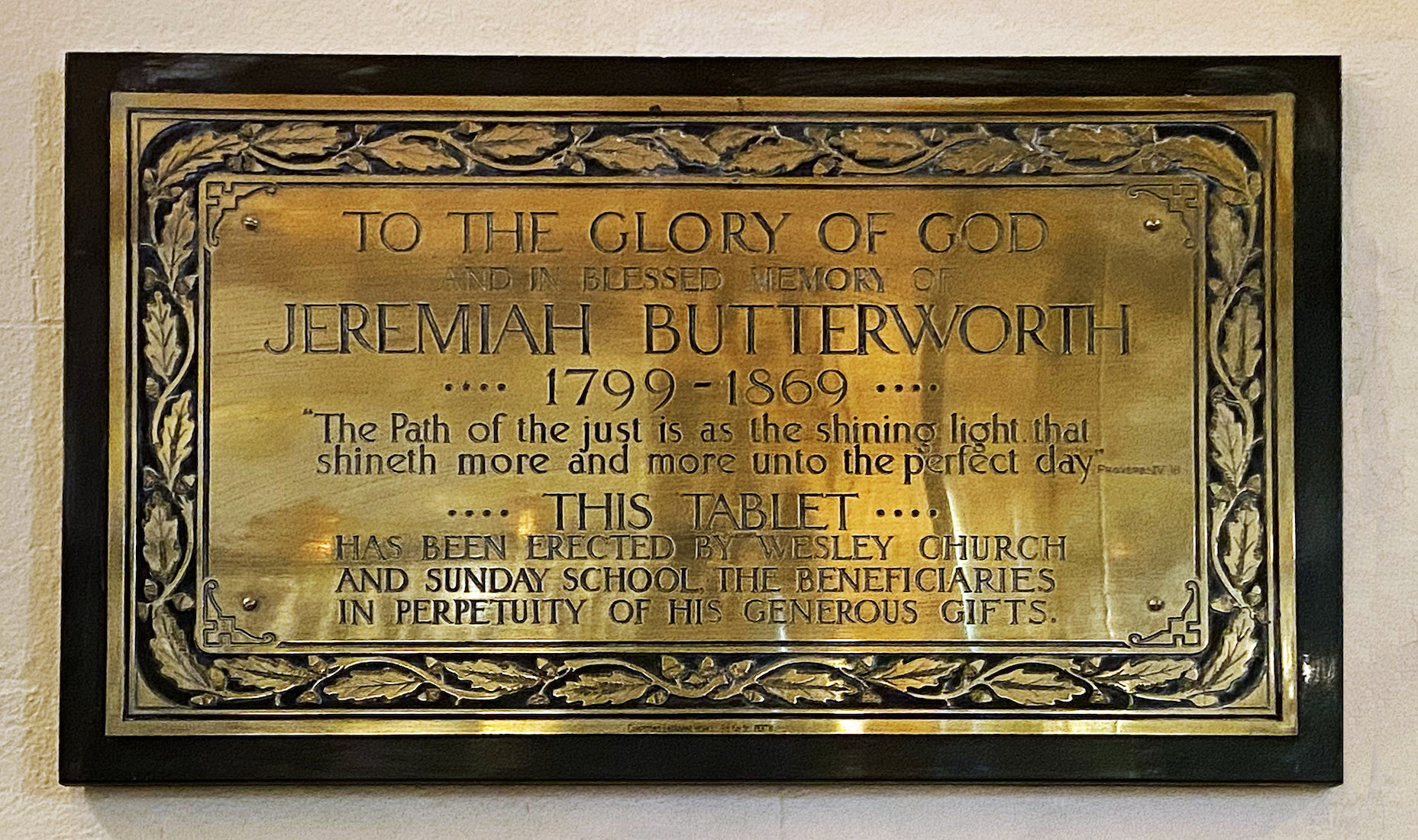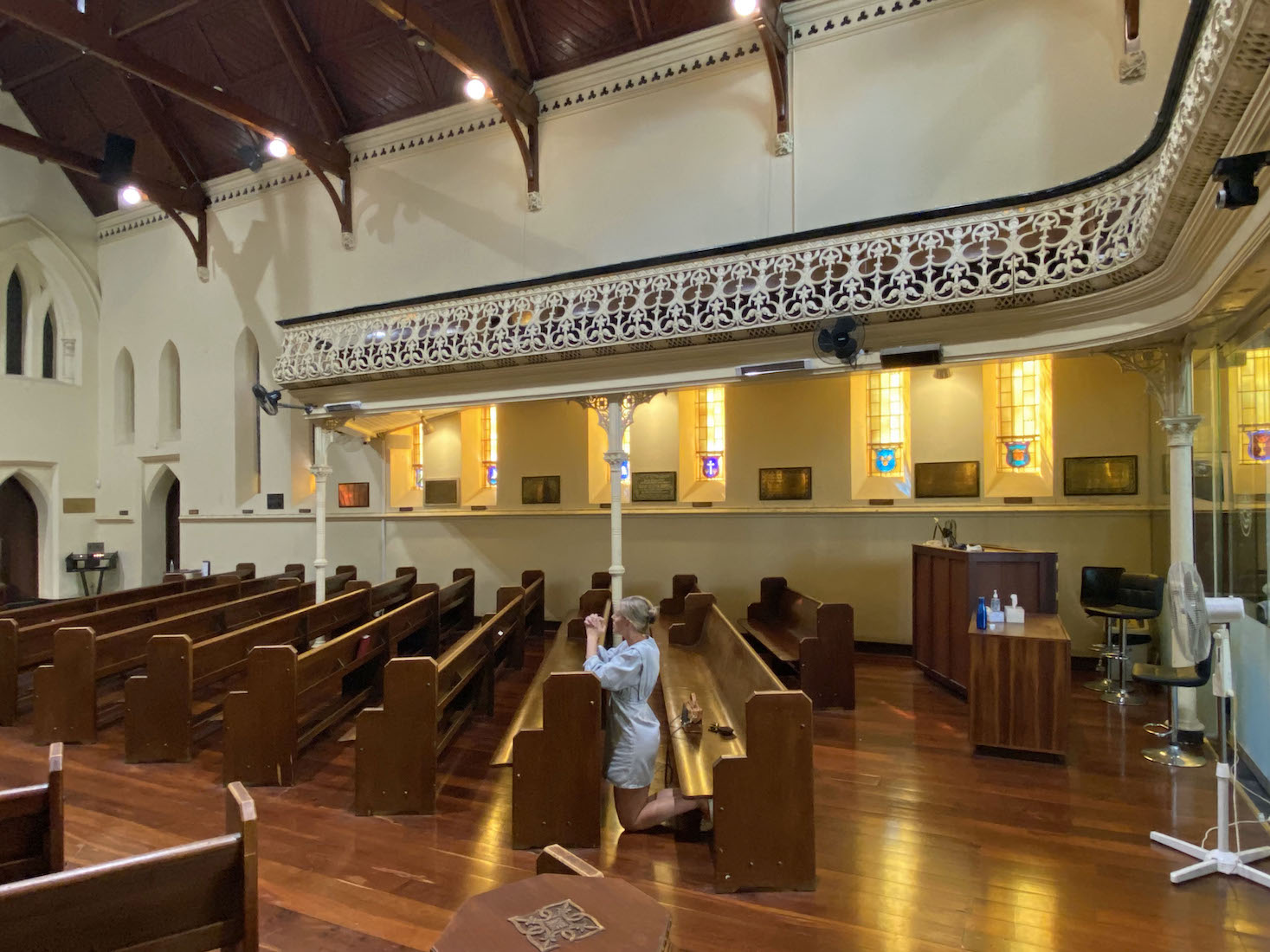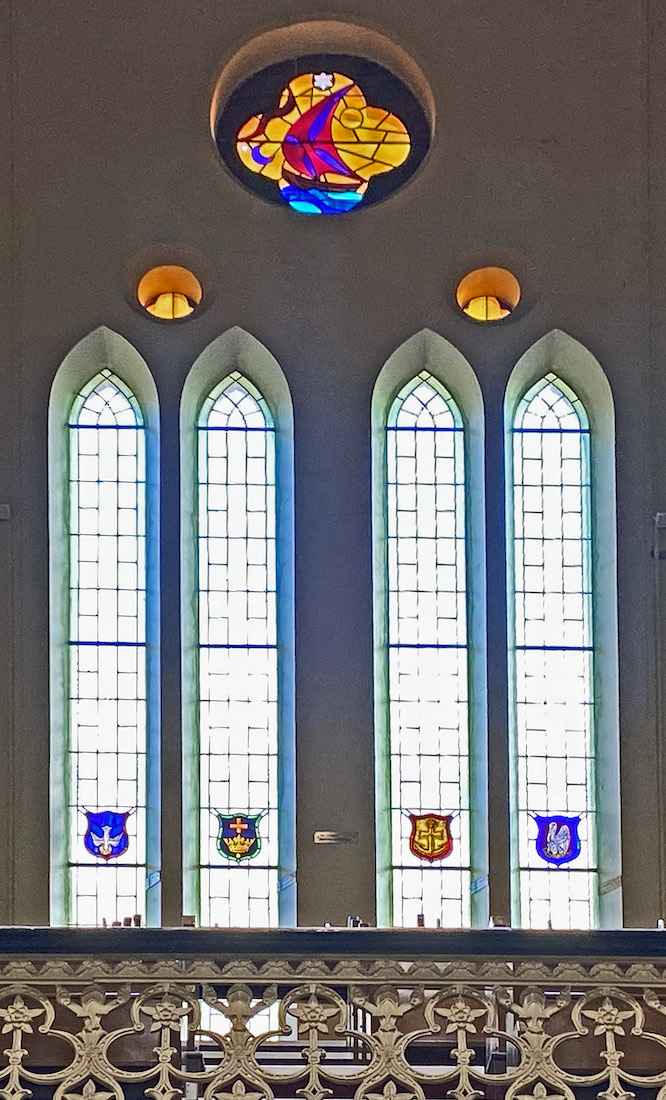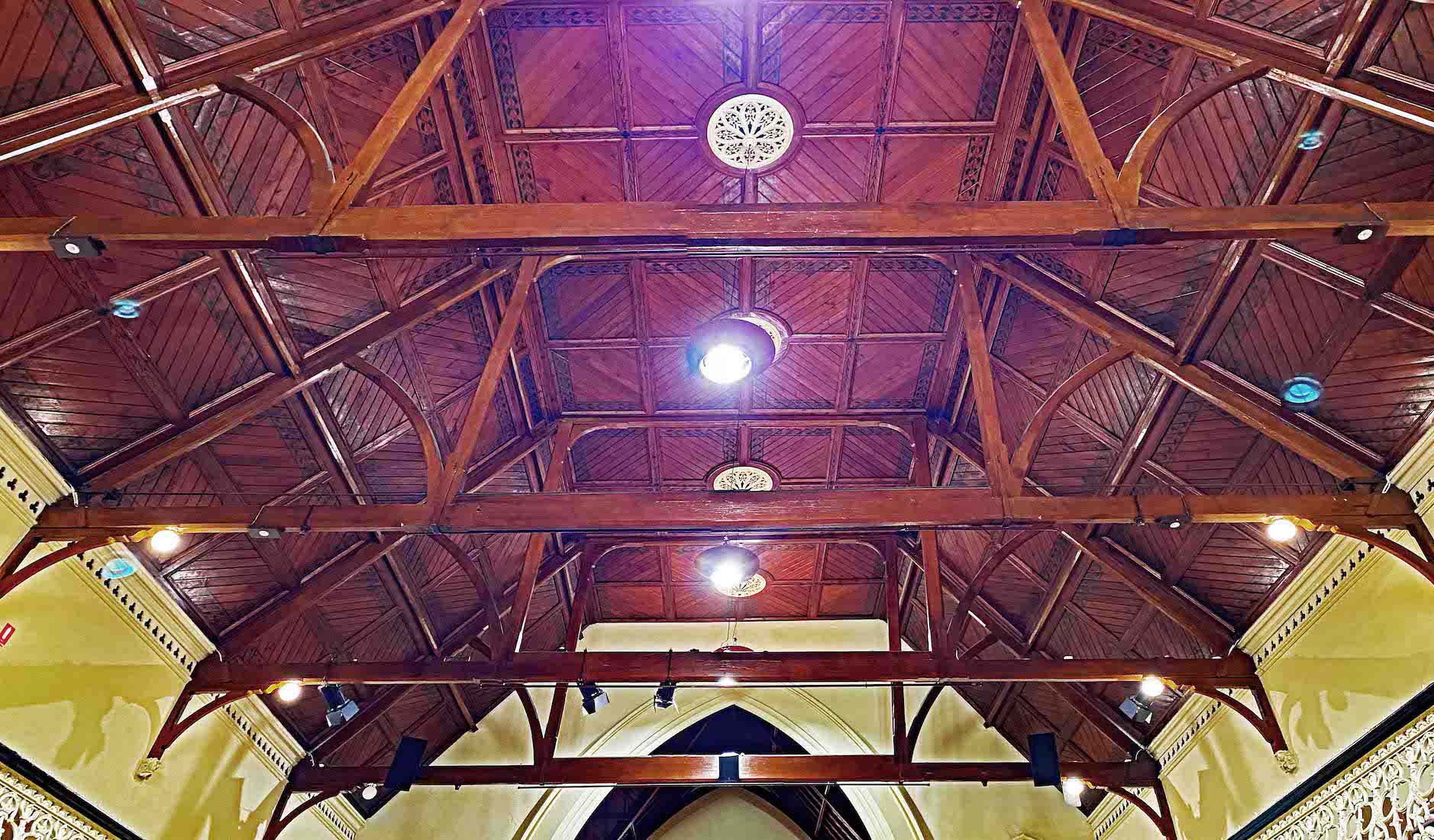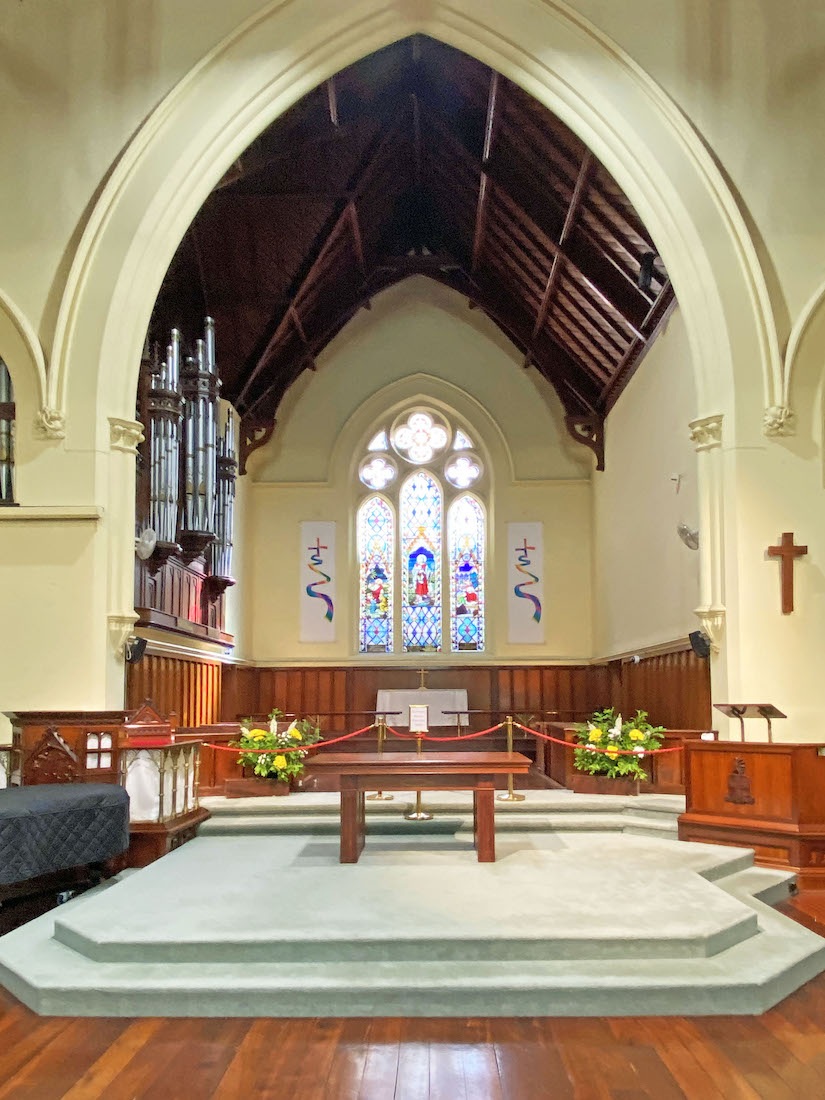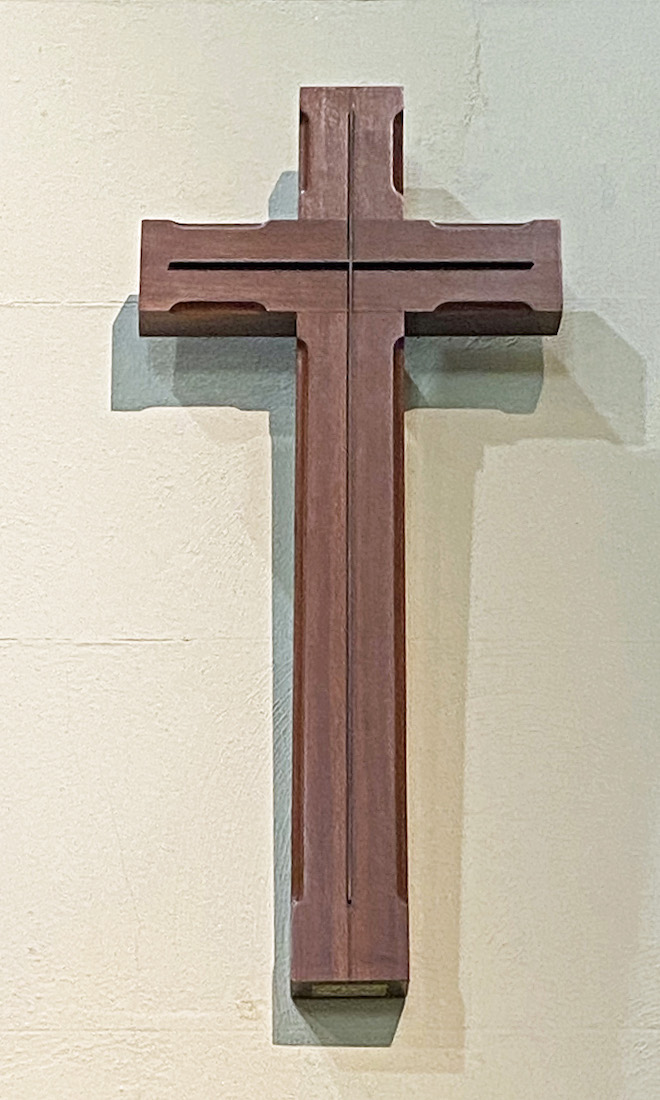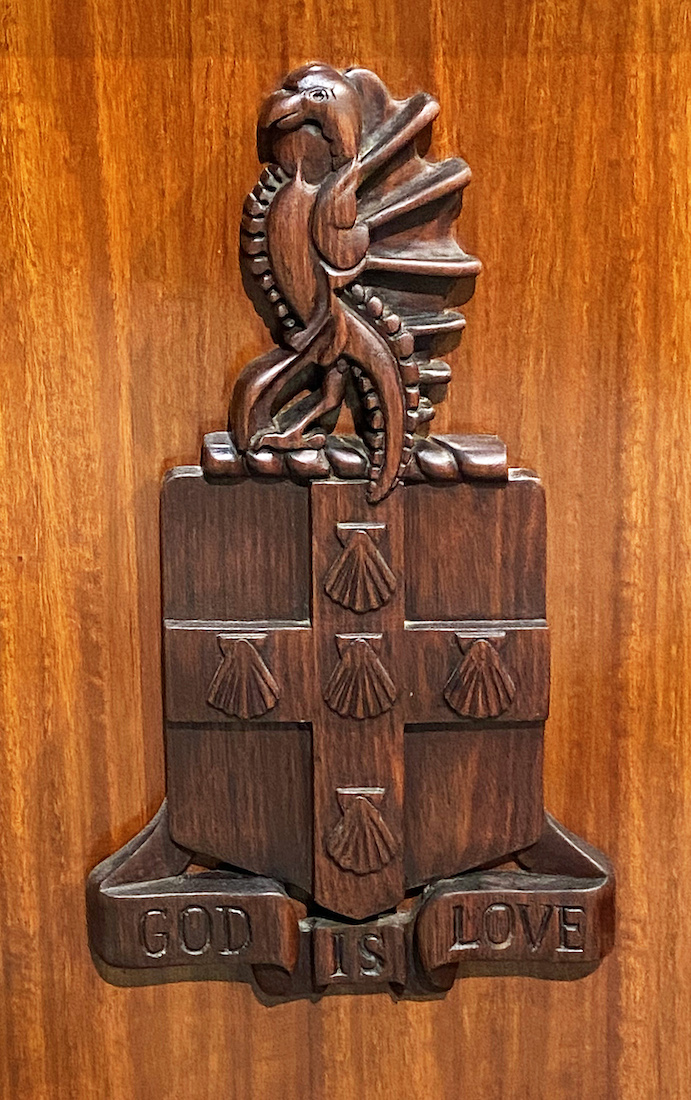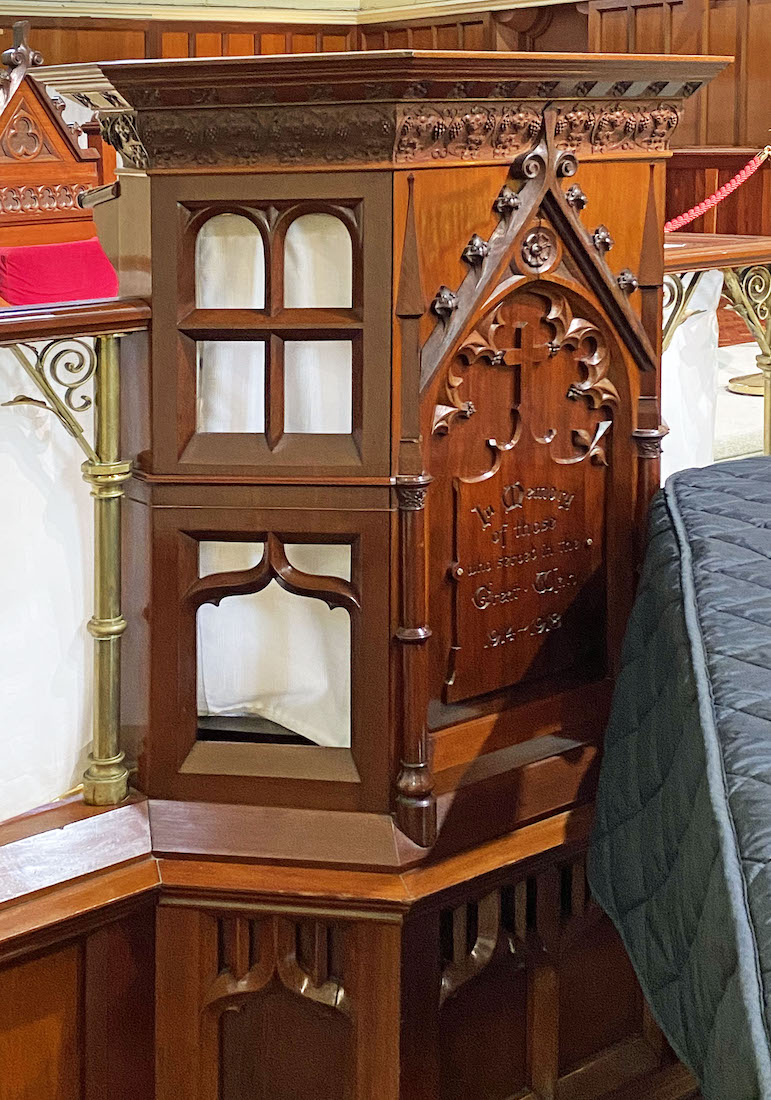44. WINDOW TRIPLET NH
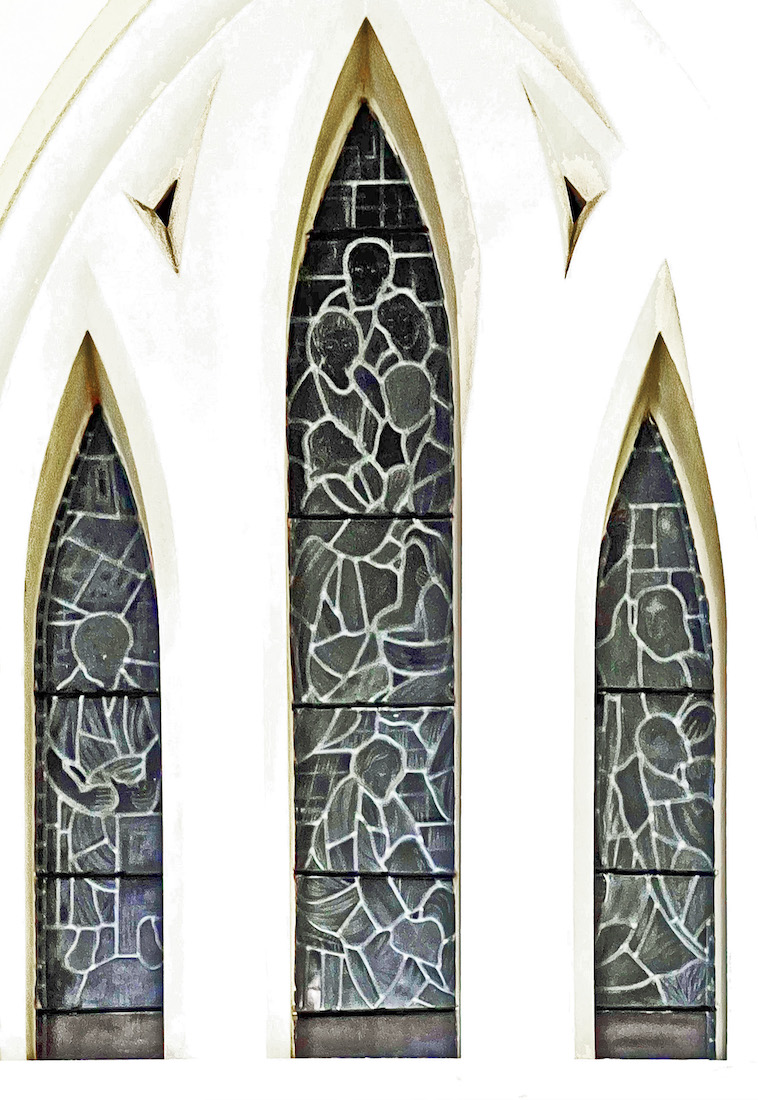
These windows in fact show scenes of the Servant Lord. They form a memorial to the Revd Ralph Sutton, minister of Wesley from 1952 to 1967, and his wife Dorothy.
46. CHAPEL PLAQUE

‘A sanctuary for private devotion and worship’. Now there's a thought!
47. CHAPEL WINDOW

The Wesley Chapel was constructed in 1974. The most noticeable feature of the chapel is the round window depicting the Christ of the City – recognisably Perth, with a background of gold rays representing the New Jerusalem. WE now leave the chapel, and return to the nave to investigate the South wall.
48. SOUTH WINDOWS SET 4
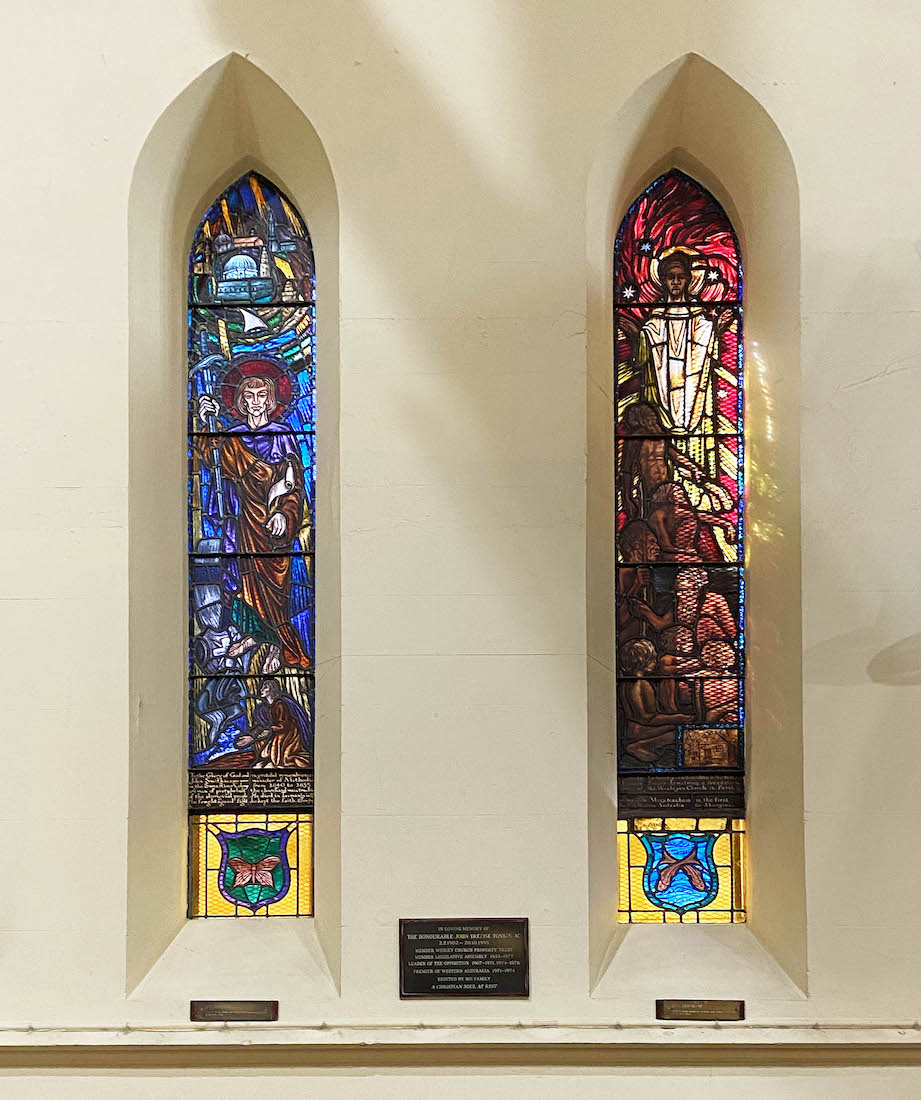
There are two pictorial windows in the South wall, both unveiled during the Church’s centenary celebrations. The window at left honours the Revd John Smithies, the first ordained minister of Wesley Church, who served in Perth for 12 years. Mr Smithies arrived, with his wife Hannah and their daughter Hannah Mary who was born en route from England to the Swan river settlement, two weeks prior to landing at Fremantle. Hannah Mary is the first name recorded in the Baptismal Register of Wesley Church. The next window, at right, full of the colours of earth and fire, is a memorial to Francis Fraser Armstrong, Government interpreter for Aborigines at the time of Smithies and, with his wife Mary, a devoted teacher and helper of the Aboriginal people. The window shows Aboriginal youths being taught by tribal elders. Of great importance is the representation of an Aboriginal Christ. In the lower corner of this window, we see Perth’s first Methodist chapel which was also used by Armstrong as a schoolroom.
49. SOUTH PLAQUE 4
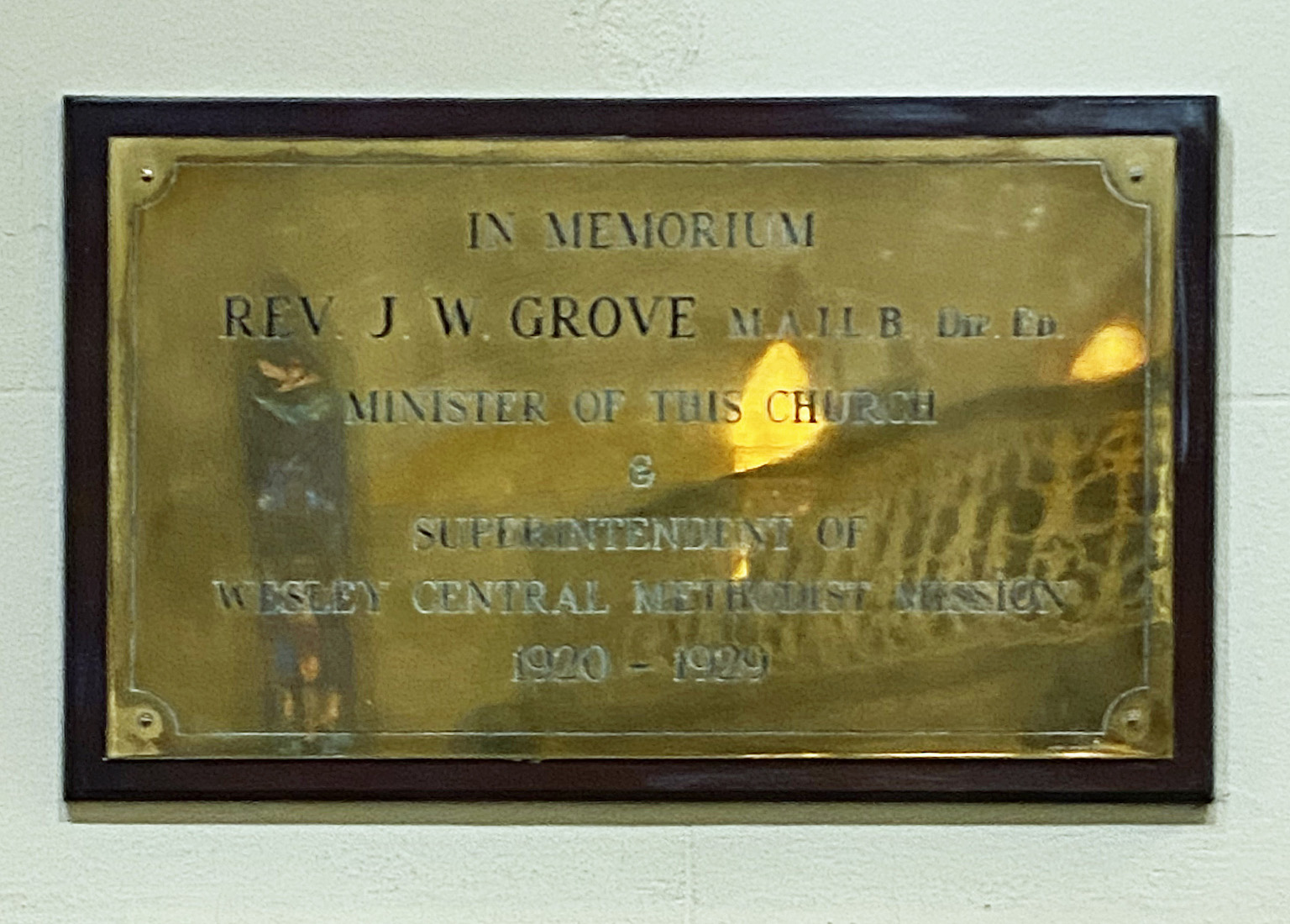
The adjacent brass plaque remembers Rev J. W. Grove who was minister of this Church and superintendent of the Wesley Central Methodist Mission from 1920 to 1929.
50. SOUTH WINDOWS SET 3
We move to the next set of windows with their logos. Left Window, St Thomas – a carpentry square, and four arrows. Thomas died in southern India in 72 AD when he bled to death after being shot by an arrow. ••• Right window: St Jude – a boat which symbolises his travels with Simon on missionary journeys. ••• The central plaque is in memory of Arthur Johnston Barclay (1888 – 1953) who was a minister of the Methodist Church for sixty years, and held many positions of authority.
51. SOUTH PLAQUE 3
The next plaque is in memory of Julia Theresa (1850 – 1897), beloved wife of Sir George Shenton. There is a nearby plaque for George Shenton.
52. SOUTH WINDOW SET 2
So to the next set of windows. Logos: Left window, knife – St Bartholomew who was skinned alive when martyred. ••• Right window, cross and two sheaves – St Philip; more usually loaves of bread referring to his involvement in the feeding if the 5000. ••• The plaque is in memory of Ernest Chawner Shenton (1862 – 1909), youngest son of Sir George Shenton, who was for many years one of the leading merchants of WA.
53. SOUTH PLAQUE 2
The next plaque is in memory of Sir George Shenton (1842 – 1909) who was a prominent businessman in colonial Western Australia, the first Mayor of Perth, and a Member of the Western Australian Legislative Council for over thirty years. Perth suburb Shenton Park is named after him.
54. SOUTH WINDOW SET 1
We come to the final nave windows on the South side. Logos: Left window, scallop shells – St James the Greater. According to tradition, when the remains of St James were originally unearthed, it was said to be covered in scallop shells. ••• Right window, fish and book – Simon the Zealot. Little is known about this disciple, although many speculate that he was indeed an active missionary who helped spread the gospel across the world with the other apostles. ••• The plaque remembers Horace Elgar Mofflin (1867 – 1939) and his wife Alice Maud (1878 – 1961). Mofflin was a dedicated Church member who filled every office in the Church.
55. SOUTH PLAQUE 1
The final plaque on this side is in memory of Jeremiah Butterworth (1799 – 1869). The plaque was donated by the Congregation and Sunday School of the Church in recognition of his generous gifts. His financial legacy continues to benefit this Church and the Synod of Western Australia.
56. SOUTH NAVE WALL
We look back to the South nave wall which we have just investigated. At extreme left is a doorway leading through to the Wesley Chapel. Above this door is a set of three windows which are unfortunately dark through being enclosed behind. In fact, these windows depict scenes of the Servant Lord. The windows form a memorial to the Revd Ralph Sutton, minister of Wesley from 1952 to 1967, and his wife Dorothy. Mr Sutton was responsible for a period in the life of this Church that saw much vision and innovation. In particular he will be remembered as the initiator of: Good Samaritan Industries (now recognized across the metropolitan area as ‘Good Sammy’) – providing employment for people with disabilities; and Rowethorpe Retirement Village (now part of the extensive Uniting Church Homes for the Aged) which, in its day, set the standard for this type of accommodation.
57. WEST WINDOW
From the front of the nave we can also look back to see the top half of the West window rising above the balcony. Just above the balcony are four Christian emblems set in colourful shields. At top is a colourful quatrefoil window with a sail boat – perhaps a reminder for the early colonists of their voyage to Western Australia.
58. WEST BALCONY DETAIL NH x3
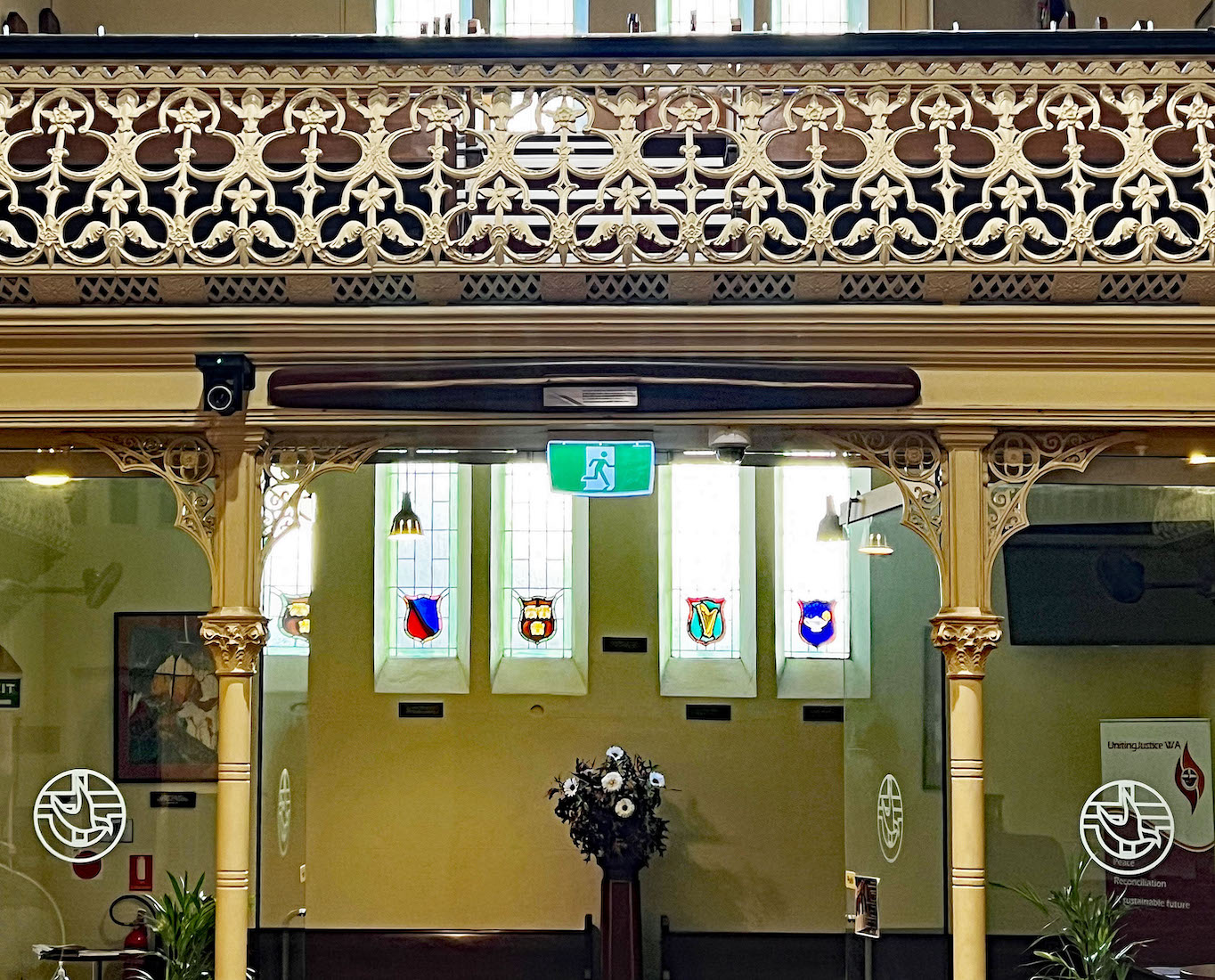
The West balcony covers the foyer which here opens to the nave. A curious object above the doorway here is easily missed by visitors.
59. SPECIAL SPEAR
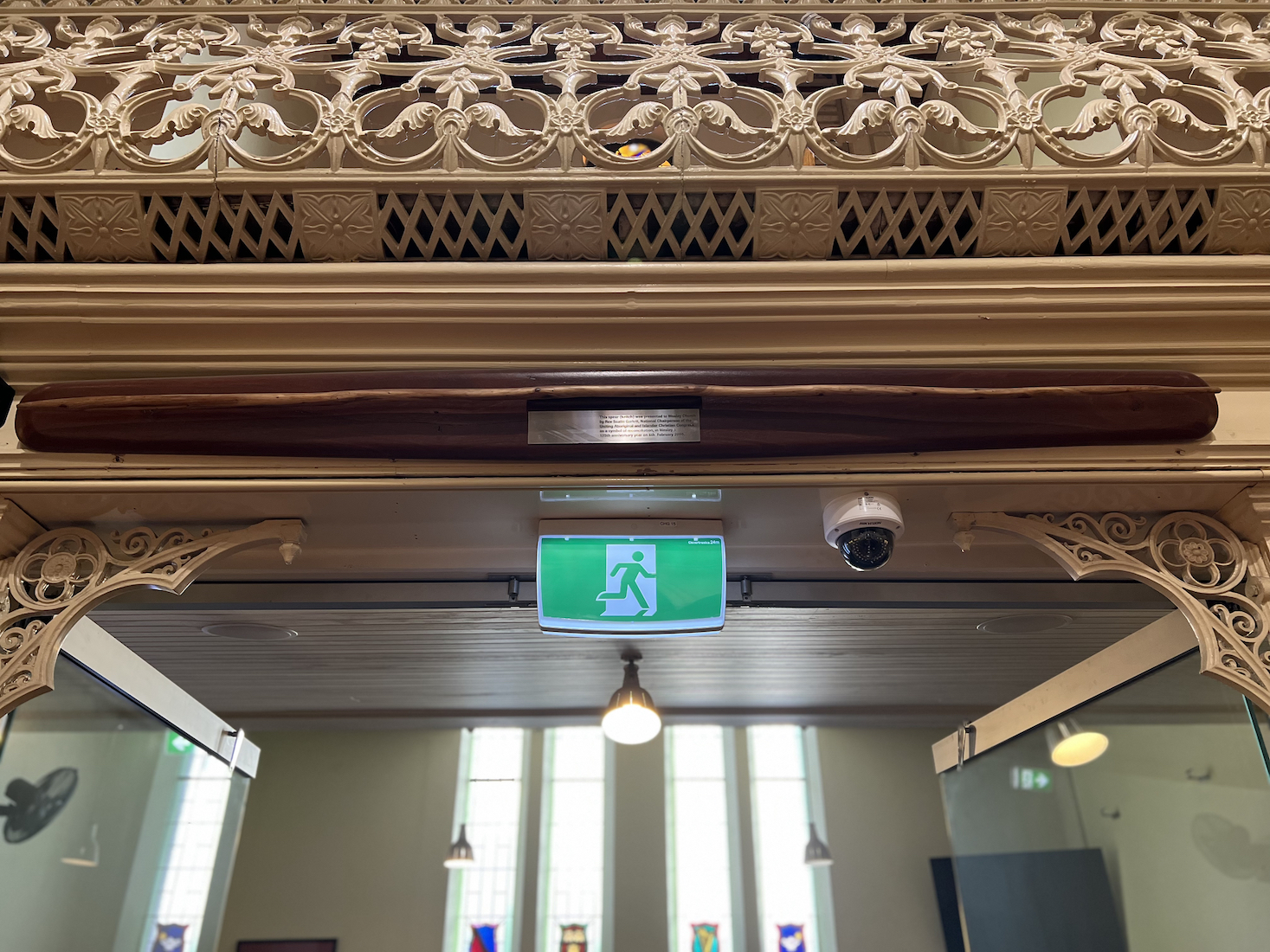


‘The object above the doorway is a spear on a jarrah mounting. This spear was presented by Revd Sealin Garlett on behalf of the Nyungar people to Wesley Church during its 175th celebrations in 2006. It was given in recognition of the way this Church has worked with indigenous inhabitants from the beginning of settlement and as a sign of reconciliation.
60. TIMBER ROOF
It is worth looking up at the wonderful timber roof, with its pattern of planking squares supported by great timber beams. The trusses are a variant of the so-called attic truss.
61. CHANCEL, CROSS
At the front of the nave, a white carpeted raised platform leads back to a large panelled recess forming the chancel. Across the front from left we have the pulpit, the large communion table, and the lectern. On the wall at right is a large wooden cross. Most Protestant churches prefer the cross to the crucifix, with the thought that it emphasises the fact that Christ is risen and alive today.
62. LECTERN
This is the place from which the Scripture is read. The decoration on the front is John Wesley’s crest. It shows a cross with ‘God is Love’ written below. Above is a mythical wyvern, and five scallop shells adorn the cross. The scallop shell is the symbol of James the Greater.
63. PULPIT
Nearby, and rather obscured by the large piano, is the pulpit. We observe from the decorative work on the pulpit that it is dedicated to those who died in World War I. Interestingly this originally stood in the centre where the communion table now stands. In today's thinking the communion table and the Lord’s supper have taken that central role.


